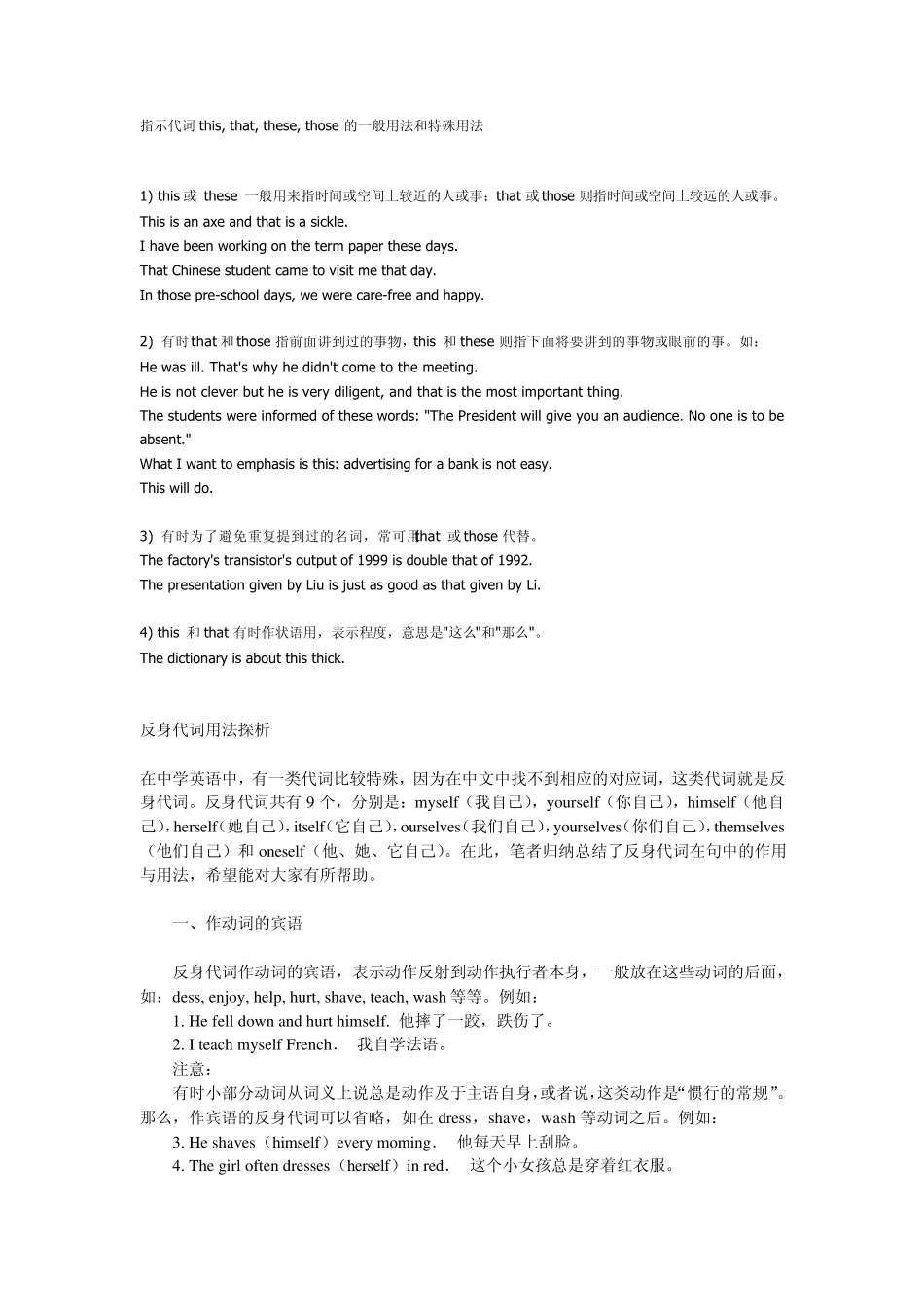指示代词 this, that, these, those 的一般用法和特殊用法 1) this 或 these 一般用来指时间或空间上较近的人或事;that 或 those 则指时间或空间上较远的人或事。 This is an axe and that is a sickle. I have been working on the term paper these days. That Chinese student came to visit me that day. In those pre-school days, we were care-free and happy. 2) 有时that 和 those 指前面讲到过的事物,this 和 these 则指下面将要讲到的事物或眼前的事。如: He was ill. That's why he didn't come to the meeting. He is not clever but he is very diligent, and that is the most important thing. The students were informed of these words: "The President will give you an audience. No one is to be absent." What I want to emphasis is this: advertising for a bank is not easy. This will do. 3) 有时为了避免重复提到过的名词,常可用that 或 those 代替。 The factory's transistor's output of 1999 is double that of 1992. The presentation given by Liu is just as good as that given by Li. 4) this 和 that 有时作状语用,表示程度,意思是"这么"和"那么"。 The dictionary is about this thick. 反身代词用法探析 在中学英语中,有一类代词比较特殊,因为在中文中找不到相应的对应词,这类代词就是反身代词。反身代词共有 9 个,分别是:myself(我自己),yourself(你自己),himself(他自己),herself(她自己),itself(它自己),ourselves(我们自己),yourselves(你们自己),themselves(他们自己)和 oneself(他、她、它自己)。在此,笔者归纳总结了反身代词在句中的作用与用法,希望能对大家有所帮助。 一、作动词的宾语 反身代词作动词的宾语,表示动作反射到动作执行者本身,一般放在这些动词的后面, 如:dess, enjoy, help, hurt, shave, teach, wash 等等。例如: 1. He fell down and hurt himself. 他摔了一跤,跌伤了。 2. I teach myself French. 我自学法语。 注意: 有时小部分动词从词义上说总是动作及于主语自身,或者说,这类动作是“惯行的常规”。那么,作宾语的...


